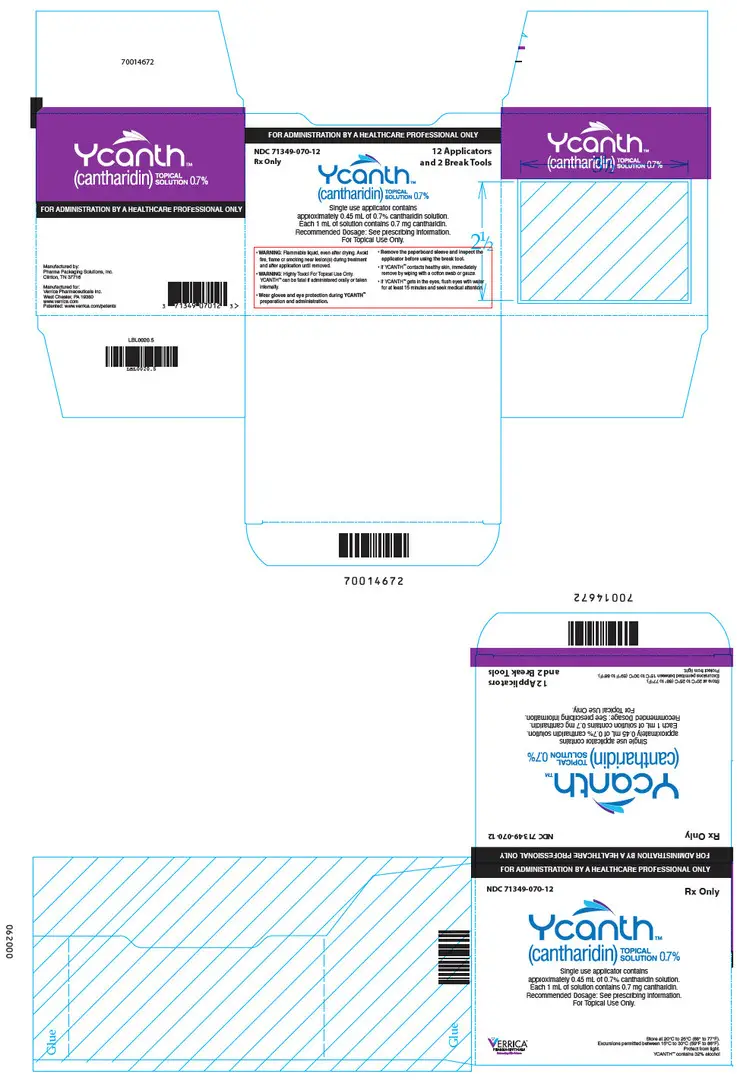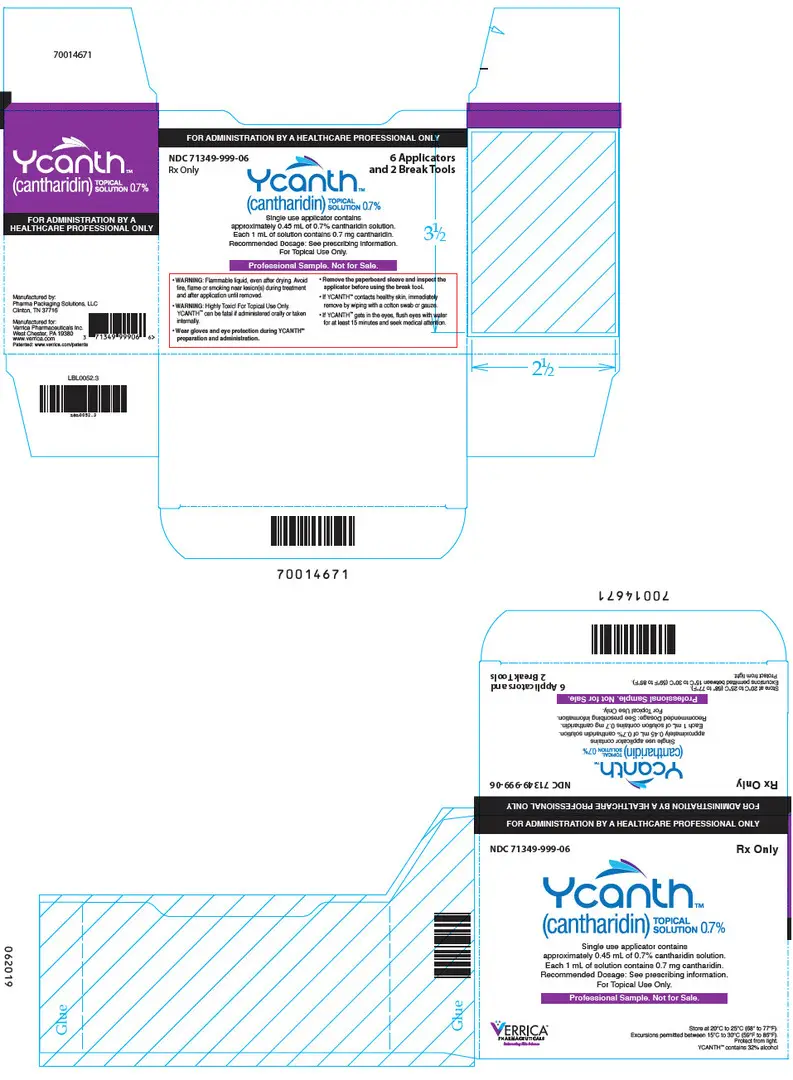Drug Detail:Ycanth (Cantharidin 0.7%)
Drug Class: Topical keratolytics
Highlights of Prescribing Information
YCANTH™ (cantharidin) topical solution
Initial U.S. Approval: 2023
Indications and Usage for Ycanth
YCANTH is indicated for the topical treatment of molluscum contagiosum in adult and pediatric patients 2 years of age and older. (1)
Ycanth Dosage and Administration
- All healthcare professionals should receive instruction and training prior to preparation and administration of YCANTH. (2.1)
- For topical use only. Not for oral, mucosal, or ophthalmic use. (2.1)
- Apply a single application directly to each lesion every 3 weeks as needed. (2.2)
- Do not use more than two applicators during a single treatment session. (2.2)
- Remove with soap and water 24 hours after treatment. (2.2)
- For additional instructions on preparation and administration of YCANTH, see Full Prescribing Information. (2.1, 2.2, 2.3)
Dosage Forms and Strengths
Topical solution: 0.7% cantharidin. (3)
Contraindications
None (4)
Warnings and Precautions
- Toxicities Associated with Inappropriate Administration: Life threatening or fatal toxicities can occur if administered orally. Avoid contact with the treatment area, including oral contact, after treatment. Ocular toxicity can occur if YCANTH comes in contact with eyes. If YCANTH gets in eyes, flush eyes with water for at least 15 minutes. (5.1)
- Local Skin Reactions: Reactions at the application site have included vesiculation, pruritus, pain, discoloration, and erythema. Avoid application near eyes and mucosal tissue, and to healthy skin. If YCANTH contacts any unintended surface, or healthy skin, immediately remove. If severe local skin reactions occur, remove prior to 24 hours after treatment. (5.2)
- Flammability: YCANTH is flammable, even after drying. Avoid fire, flame or smoking near lesion(s) during treatment and after application until removed. (5.3)
Adverse Reactions/Side Effects
Most common (incidence ≥1%) adverse reactions are the following local skin reactions at the application site: vesiculation, pain, pruritus, scabbing, erythema, discoloration, application site dryness, edema, and erosion. (6.1)
To report SUSPECTED ADVERSE REACTIONS, contact Verrica Pharmaceuticals Inc. at 1-877-837-7422 or FDA at 1-800-FDA-1088 or www.fda.gov/medwatch. Local skin reactions are expected and should be reported if they are severe.
See 17 for PATIENT COUNSELING INFORMATION and FDA-approved patient labeling.
Revised: 7/2023
Full Prescribing Information
1. Indications and Usage for Ycanth
YCANTH is indicated for the topical treatment of molluscum contagiosum in adult and pediatric patients 2 years of age and older.
2. Ycanth Dosage and Administration
2.1 Important Administration Instructions
- All healthcare professionals should receive instruction and training prior to preparation and administration of YCANTH.
- YCANTH is for topical use only.
- YCANTH is not for oral, mucosal, or ophthalmic use. Avoid contact with the treatment area, including oral contact, after YCANTH treatment. Do not apply YCANTH near the eyes [see Warnings and Precautions (5.1), Overdosage (10)].
- If YCANTH contacts any unintended surface, including healthy skin, immediately remove by wiping with a cotton swab or gauze. Avoid other topical products on treated areas until 24 hours after YCANTH treatment or until washing [see Warnings and Precautions (5.2)].
- Avoid fire, flame or smoking near lesion(s) during treatment [see Warnings and Precautions (5.3)].
2.2 Dosage and Administration Overview
- Regarding YCANTH dosage and administration:
- Use nitrile or vinyl gloves and eye protection during preparation and administration.
- Apply topically as a single application to cover each lesion. Use no more than two YCANTH applicators during a single treatment session.
- Remove with soap and water 24 hours after treatment. Administer YCANTH every 3 weeks as needed.
- Do not cover any treated lesions with bandages.
- If severe blistering, severe pain, or other severe adverse reactions occur, remove YCANTH with soap and water prior to 24 hours after treatment [see Warnings and Precautions (5.2)].
- Regarding use of the YCANTH applicator and break tool:
- Do not reuse the applicator. The applicator is for a single treatment session only.
- Do not attempt to use a clogged applicator.
- Do not cut or modify the applicator in any way; doing so could reduce dispensing control.
- Do not remove the applicator cap prior to breaking the glass ampule.
- If any damage or leaks are observed on the applicator, applicators should be discarded in a sharps container and handled in accordance with accepted medical practice and applicable law. The YCANTH Break Tool should be managed as solid waste and placed in plastic recycling containers or the general trash.
2.3 Dosage and Administration Instructions
Instructions for preparing the YCANTH Applicator and administering the YCANTH Solution are presented below.
YCANTH includes the following components [see How Supplied/Storage and Handling (16.1)]:
Outer Protective Tube |
||
The YCANTH Applicator |
||
The YCANTH Break Tool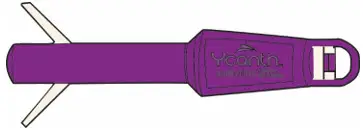  |
||
Step 1. Put on Personal Protective Equipment (PPE)
| 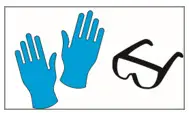 |
|
Step 2. Remove the YCANTH Applicator from Outer Protective Tube
| 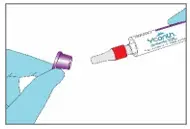 |
|
Step 3. Remove the Paperboard Sleeve
| 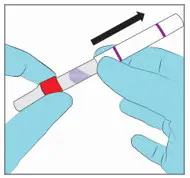 |
|
Step 4. Inspect for Damage
| ||
Broken glass ampule | Cut or cracked applicator tube | No damage (for reference) |
|
||
Step 5. Break Ampule using the YCANTH Break Tool
| 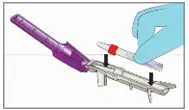 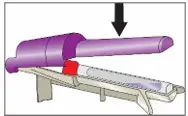 |
|
Step 6. Tap YCANTH Applicator to move YCANTH Solution
| 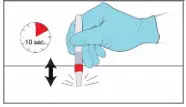 |
|
Step 7. Test the YCANTH Applicator
| 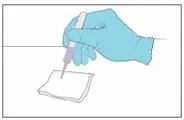 |
|
Step 8. Apply the YCANTH Solution
|  |
|
Step 9. Allow YCANTH Solution to Dry
| 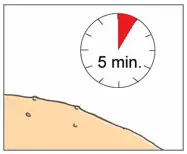 |
|
Step 10. Dispose of the YCANTH Applicator
| 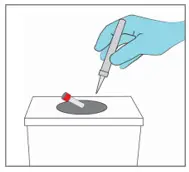 |
|
3. Dosage Forms and Strengths
Topical solution 0.7%: Each mL of YCANTH contains 7 mg (0.7%) of cantharidin in a light violet to dark purple, slightly viscous liquid.
5. Warnings and Precautions
5.1 Toxicities Associated with Inappropriate Administration
YCANTH is for topical use only. YCANTH is not for oral, mucosal, or ophthalmic use.
Life threatening or fatal toxicities can occur if YCANTH is administered orally [see Overdosage (10)]. Adverse reactions to oral ingestion of cantharidin have included renal failure, blistering and severe damage to the gastrointestinal tract, coagulopathy, seizures, and flaccid paralysis. Advise patients and/or caregivers to avoid oral contact and to avoid touching lesions after YCANTH treatment and to seek medical attention immediately if YCANTH is accidently ingested.
Ocular toxicity can occur if YCANTH comes in contact with the eyes. Adverse reactions from contact of YCANTH with the eyes can include corneal necrosis, ocular perforation, and deep ocular injuries. Do not apply YCANTH near or to the eyes. If YCANTH comes in contact with the eyes, flush eyes with water for at least 15 minutes and seek medical attention immediately.
5.2 Local Skin Reactions
YCANTH is a vesicant. Local skin reactions at the application site were observed in 97% of subjects treated with YCANTH during clinical trials. Local skin reactions included vesiculation, pruritus, pain, discoloration, and erythema [see Adverse Reactions (6.1)].
Avoid application near the eyes and mucosal tissues, and to adjacent healthy skin. If YCANTH contacts any unintended surface, including healthy skin, immediately remove by wiping with a cotton swab or gauze.
Avoid other topical products (e.g. creams, lotions, or sunscreen) on treated areas until 24 hours after YCANTH treatment or until washing. Application of other topical products could spread YCANTH and cause blistering or other adverse reactions to healthy skin.
If severe blistering, severe pain or other severe adverse reactions occur, remove YCANTH prior to the recommended 24 hours after administration by washing with soap and water.
6. Adverse Reactions/Side Effects
The following adverse reactions are described elsewhere in the labeling:
- Local Skin Reactions [see Warnings and Precautions (5.2)]
6.1 Clinical Trials Experience
Because clinical trials are conducted under widely varying conditions, adverse reaction rates observed in the clinical trials of a drug cannot be directly compared to rates in the clinical trials of another drug and may not reflect the rates observed in practice.
YCANTH was studied in two randomized, double-blind, placebo-controlled phase 3 trials, Trial 1 (NCT03377790) and Trial 2 (NCT03377803) (n = 266, and n = 262, respectively) in subjects with molluscum contagiosum. Most patients received a single 24-hour dermal administration of YCANTH or vehicle for each lesion every 3 weeks for up to 4 treatments. YCANTH Solution or vehicle were removed prior to the 24-hour timepoint in 109/311 (35%) subjects treated with YCANTH Solution and 46/216 (21%) subjects treated with vehicle due to treatment-emergent adverse events.
Table 1 presents the percentage of subjects with selected adverse reactions (incidence ≥ 1%) by the most severe grade reported during Trial 1 and Trial 2. Adverse reactions were primarily local skin reactions at the application site. Local skin reactions at the application site were observed in 97% of subjects treated with YCANTH during both trials.
| YCANTH N=311 | Vehicle N=216 |
|||||
|---|---|---|---|---|---|---|
| Preferred Term Name | Mild | Moderate | Severe | Mild | Moderate | Severe |
| Application site vesicles | 60% | 32% | 4% | 27% | 2% | 0% |
| Application site pain and pain | 41% | 20% | 2% | 16% | 1% | 0% |
| Application site pruritus and pruritus | 47% | 8% | 1% | 30% | 7% | 0% |
| Application site scab and scab | 39% | 9% | 0% | 20% | 1% | 0% |
| Application site erythema and erythema | 24% | 21% | <1% | 20% | 7% | 0% |
| Application site discoloration | 28% | 4% | <1% | 12% | 1% | 0% |
| Application site dryness | 19% | 2% | 0% | 14% | 1% | 0% |
| Application site edema | 7% | 3% | 0% | 3% | 1% | 0% |
| Application site erosion | 6% | 1% | 0% | 1% | 0% | 0% |
| Contact dermatitis | 0% | 1% | 0% | 0% | 0% | 0% |
There were no serious adverse reactions reported in the two controlled trials.
The discontinuation rate due to an adverse reaction was 2.3% among subjects treated with YCANTH and 0.5% among subjects treated with vehicle.
8. Use In Specific Populations
8.4 Pediatric Use
Risk Summary
The safety and effectiveness of YCANTH for the treatment of molluscum contagiosum have been established in pediatric patients aged 2 years and older. The use of YCANTH in pediatric patients is supported by results from adequate and well-controlled trials in patients 2 years of age and older; although the safety and efficacy of drug use for longer than 12 weeks has not been established [see Clinical Studies (14)].
The safety and efficacy in pediatric patients below the age of 2 years have not been established.
10. Overdosage
Oral ingestion of cantharidin has resulted in renal failure, blistering and severe damage to the gastrointestinal tract, coagulopathy, seizures, and flaccid paralysis.
In the event that YCANTH topical solution is ingested, patients should seek medical attention immediately and contact a Poison Control Center (1-800-222-1222) or a medical toxicologist for additional overdosage management recommendations.
11. Ycanth Description
YCANTH (cantharidin) topical solution is a light violet to dark purple, slightly viscous liquid for topical administration.
Each mL of YCANTH topical solution contains 7 mg of active ingredient cantharidin (0.7%), a lipophilic compound. Cantharidin is a white to off-white solid at room temperature and is only very slightly soluble in water.
The chemical name for cantharidin is 1,2-dimethyl-3,6-epoxyperhydrophthalic anhydride. The molecular weight is 196.20 g/mol and the molecular formula is C10H12O4. The structural formula for cantharidin is represented below:
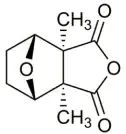
The inactive ingredients of YCANTH topical solution are acetone, camphor, castor oil, denatonium benzoate, ethanol (32%), gentian violet, hydroxypropyl cellulose, and nitrocellulose. The inactive ingredient denatonium benzoate is an oral deterrent to help mitigate the risk of accidental ingestion.
12. Ycanth - Clinical Pharmacology
12.1 Mechanism of Action
The mechanism of action of cantharidin in the treatment of molluscum contagiosum is unknown.
12.2 Pharmacodynamics
Cantharidin is a vesicant. The pharmacodynamics of cantharidin in the treatment of molluscum contagiosum are unknown.
12.3 Pharmacokinetics
Pharmacokinetics of cantharidin were assessed in 16 subjects aged 2 years and older with at least 21 molluscum contagiosum lesions at baseline. Subjects were administered a single, dermal application of cantharidin solution to each lesion. The average number of lesions treated for subjects in the exposure treatment group was 47.4 (median was 35.0).
Cantharidin was not detectable in 15 out of 16 subjects. Only one subject had a detectable cantharidin plasma level of 3.391 ng/mL at the 2-hour post-dose.
13. Nonclinical Toxicology
13.1 Carcinogenesis, Mutagenesis, Impairment of Fertility
Carcinogenicity studies have not been conducted with cantharidin.
Cantharidin was not mutagenic in a bacteria reverse mutation (Ames) assay. An in vitro chromosomal aberration assay in human lymphocytes with cantharidin was inconclusive. Cantharidin was positive in an in vitro micronucleus assay in TK6 cells, primarily through an aneugenic mechanism.
The effects of cantharidin on fertility have not been evaluated.
14. Clinical Studies
In two double-blind, randomized, placebo-controlled trials (Trial 1 [NCT03377790] and Trial 2 [NCT03377803]), 528 subjects ages 2 years and older with molluscum contagiosum were randomized by household to treatment with either YCANTH or vehicle. Subjects ranged from 2 to 60 years of age, with a median age of 6. 51% of subjects were male and 91% were Caucasian. The baseline lesion count among subjects ranged from 1 to 184, with a mean of 23 and 19 lesions among subjects in Trial 1 and Trial 2, respectively.
Subjects' lesions were treated with either YCANTH or vehicle at intervals of approximately 21 days until complete clearance of the lesion or for a maximum of 4 applications (on Days 1, 21, 42, and 63). Study drug solution was applied and left on the lesions for approximately 24 hours before the lesions were washed with soap and water.
A healthcare professional who was blinded to the treatment group counted the number of lesions at each visit. The primary efficacy endpoint was the proportion of patients achieving complete clearance of all treated molluscum contagiosum lesions by Day 84. The secondary efficacy endpoints were the proportions of patients achieving complete clearance of all treated molluscum contagiosum lesions at Day 63, Day 42, and Day 21. Table 2 presents the efficacy results for Trial 1 and Trial 2.
| Trial 1 | Trial 2 | |||||
|---|---|---|---|---|---|---|
| YCANTH N = 160 | Vehicle N = 106 | Treatment Difference (95% CI)* | YCANTH N = 150 | Vehicle N = 112 | Treatment Difference (95% CI)* |
|
| CI = confidence interval. | ||||||
|
||||||
| Day 84 | 46% | 18% | 29% (19%, 38%) | 54% | 13% | 40% (30%, 51%) |
| Day 63 | 32% | 17% | 15% (4%, 25%) | 28% | 5% | 23% (15%, 32%) |
| Day 42 | 21% | 9% | 10% (2%, 19%) | 13% | 4% | 9% (3%, 16%) |
| Day 21 | 11% | 4% | 8% (2%, 14%) | 5% | 2% | 3% (-1%, 8%) |
16. How is Ycanth supplied
16.1 How Supplied
YCANTH topical solution is supplied in a sealed glass ampule contained within a single-use applicator and enclosed in a protective paperboard sleeve. Each ampule of YCANTH contains approximately 0.45 mL of 0.7% cantharidin solution. Each mL of YCANTH contains 7 mg cantharidin (0.7%). A YCANTH Break Tool is co-packaged as 2 units per each carton of applicators.
A listing of the available carton packages is provided in Table 3.
| Dosage Strength | Single-Use Applicator | Single Applicator NDC (Each) | Number of YCANTH Applicators (Each) per Carton | YCANTH Break Tool Part Reference Number | Number of YCANTH Break Tools (Each) per Carton | NDC |
|---|---|---|---|---|---|---|
| 0.7% (7 mg/mL) | 1 each | 71349-070-01 | 6 | 71349-000-01 | 2 | 71349-070-06 |
| 12 | 71349-000-01 | 2 | 71349-070-12 |
Individual YCANTH Break Tools are available separately (Part Reference Number 71349-000-01).
To request additional YCANTH Break Tools, contact Verrica Pharmaceuticals at 1-800-843-7477.
17. Patient Counseling Information
Advise the patient and/or caregivers to read the FDA-approved patient labeling (Patient Information).
| This Patient Information has been approved by the U.S. Food and Drug Administration. | Issued: 07/2023 | ||
| PATIENT INFORMATION YCANTH (WYE' KANTH) (cantharidin) topical solution |
|||
| What is YCANTH?
YCANTH is a prescription medicine used on the skin (topical) to treat molluscum contagiosum (molluscum bumps) in adults and children 2 years of age and older. It is not known if YCANTH is safe and effective in children under 2 years of age. |
|||
| Do not receive treatment with YCANTH if you are allergic to any of the ingredients in YCANTH. See the end of this leaflet for a complete list of ingredients in YCANTH. | |||
Before receiving treatment with YCANTH, tell your healthcare provider about all of your medical conditions, including if you:
|
|||
|
How will I receive treatment with YCANTH?
|
|||
What should I avoid after receiving treatment with YCANTH?
|
|||
| What are the possible side effects of YCANTH? YCANTH can cause serious side effects, including:
|
|||
|
|||
|
|
||
| If you or your child swallow (ingest) YCANTH, contact a Poison Control Center (1-800-222-1222) or go to the nearest hospital emergency room right away. | |||
|
|||
|
|
||
| If YCANTH accidentally gets into your eyes, flush them well with water for at least 15 minutes and get medical help right away. | |||
|
|||
|
|
||
| If you develop severe blistering, severe pain or other severe reactions at the treated areas of your or your child's skin, wash YCANTH off of your skin sooner than 24 hours and call your healthcare provider. See "How will I receive treatment with YCANTH?" | |||
| Call your doctor for medical advice about side effects. You may report side effects to FDA at 1-800-FDA-1088. You may also report side effects to Verrica Pharmaceuticals Inc. at 1-877-837-7422. |
|||
| General information about the safe and effective use of YCANTH.
Medicines are sometimes prescribed for purposes other than those listed in a Patient Information leaflet. You can ask your pharmacist or healthcare provider for information that is written for health professionals. |
|||
| What are the ingredients in YCANTH?
Active ingredient: cantharidin Inactive ingredients: acetone, camphor, castor oil, denatonium benzoate, ethanol, gentian violet, hydroxypropyl cellulose, and nitrocellulose. The inactive ingredient denatonium benzoate is a bittering agent to discourage young children from putting it in their mouths and accidentally swallowing YCANTH. Manufactured by: Pharmaceutical Packaging Solutions, 341 JD Yarnell Industrial Pkwy, Clinton, TN 37716 For: Verrica Pharmaceuticals Inc., 44 West Gay Street, Suite 400, West Chester, PA 19380. YCANTH and VERRICA are trademarks of Verrica Pharmaceuticals Inc. Copyright © 2023 Verrica Pharmaceuticals Inc. All rights reserved |
|||
| YCANTH
cantharidin solution |
||||||||||||||||||||||||||||||||||||||||||||||||||||||||||||||||||||||
|
||||||||||||||||||||||||||||||||||||||||||||||||||||||||||||||||||||||
|
||||||||||||||||||||||||||||||||||||||||||||||||||||||||||||||||||||||
|
||||||||||||||||||||||||||||||||||||||||||||||||||||||||||||||||||||||
|
||||||||||||||||||||||||||||||||||||||||||||||||||||||||||||||||||||||
| YCANTH
cantharidin solution |
|||||||||||||||||||||||||||||||||||||||||||||
|
|||||||||||||||||||||||||||||||||||||||||||||
|
|||||||||||||||||||||||||||||||||||||||||||||
|
|||||||||||||||||||||||||||||||||||||||||||||
|
|||||||||||||||||||||||||||||||||||||||||||||
| Labeler - Verrica Pharmaceuticals Inc. (015664551) |




